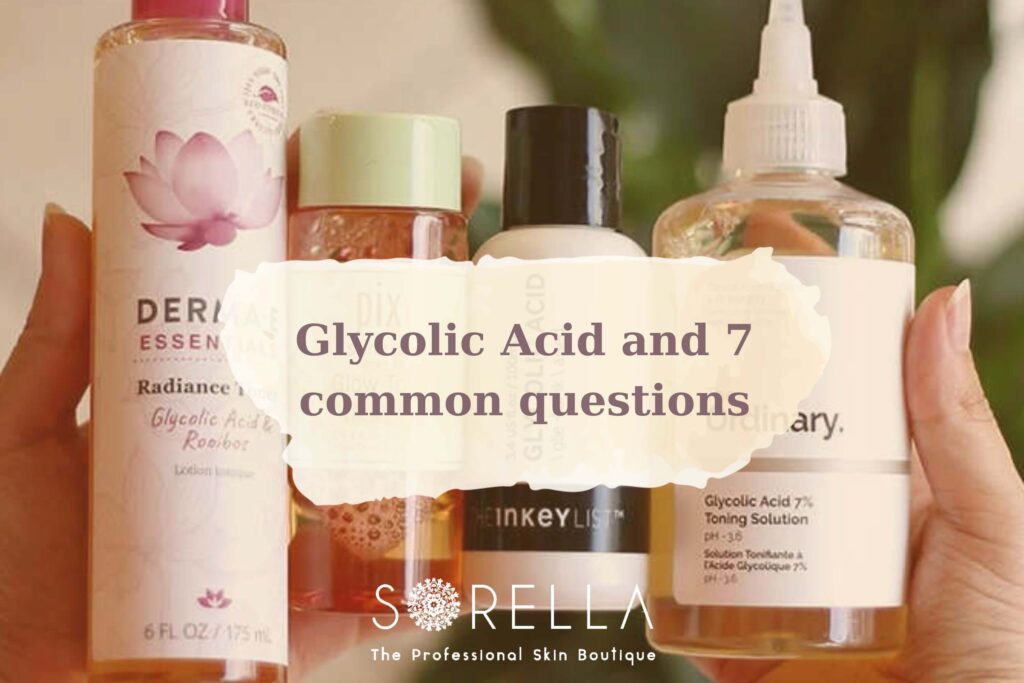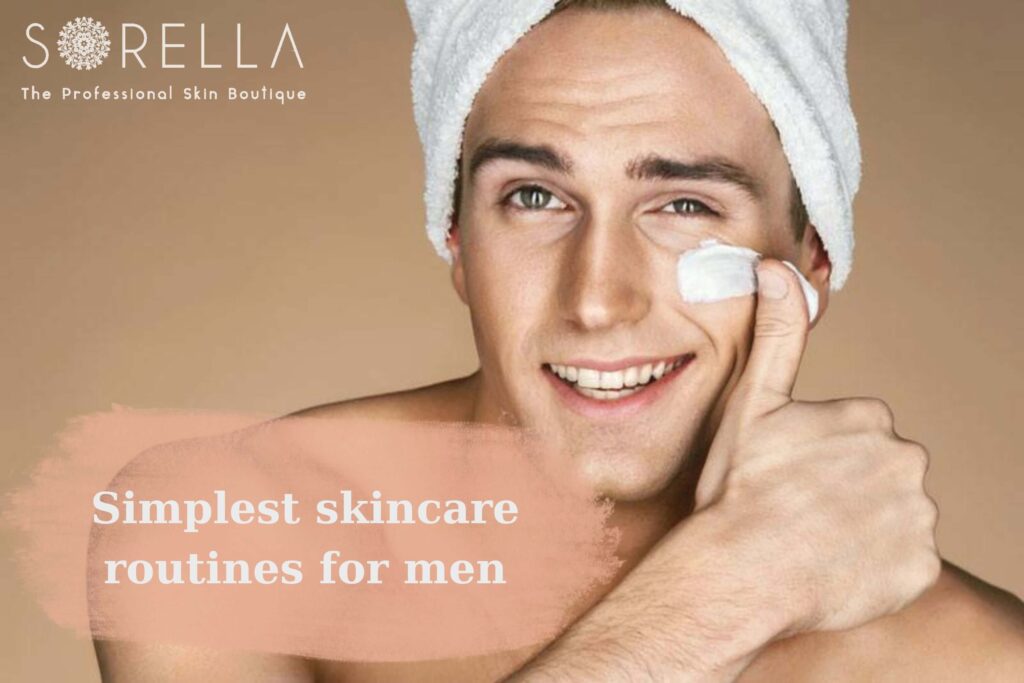bí quyết làm đẹp
Remove makeup how many times is good?
Skin care is an incredibly important and enduring process aimed at protecting, maintaining, and nourishing the skin. Many topics are passionately discussed regarding this process, and one of them is that we should remove makeup how many times each day, as cleansing is the first step and has a significant impact on your skin. It ensures that your skin remains clean, dry, and ready to absorb the maximum benefits from other beauty products.
However, improper cleansing or excessive frequency can also cause harm to the skin, such as disrupting the skin’s protective barrier. The following article by Sorella will address these concerns.
What is a makeup remover?

Makeup remover is the initial and crucial step in every daily skincare routine, essential for maintaining healthy and radiant skin. This process involves eliminating all traces of makeup, along with impurities like dirt, excess oil, and environmental pollutants, which accumulate on the skin throughout the day or night. By thoroughly cleansing the skin, makeup removal ensures that the pores are unclogged and ready to absorb the subsequent skincare products effectively.
Types of makeup remover
There are two main types of makeup removers available:
- Water-based makeup remover: These products typically come in the form of micellar water or cleansing lotions. They work by utilizing micelles, which are tiny oil molecules suspended in water, to attract and lift away makeup, dirt, and impurities from the skin’s surface.
- Oil-based makeup remover: These products, such as cleansing oils or balms, are designed to dissolve and break down makeup, including waterproof formulas and long-wearing products. Oil-based removers effectively lift away makeup without stripping the skin of its natural oils, leaving it nourished and hydrated.
While both types of makeup removers serve the same purpose of cleansing the skin, individuals may choose one over the other based on personal preference, skin type, and the type of makeup being removed. It’s essential to select a makeup remover that effectively removes impurities without causing irritation or dryness, ensuring the skin remains clean, balanced, and healthy.
How to use makeup remover?

About Oil-based makeup remover:
- Cleaning hands, drying them, and performing the cleansing process with an oil-based product on dry, non-moist, and non-wet skin.
- Take a sufficient amount of the product, massage it onto the face for 3-7 minutes, and rub evenly in circular motions on the skin. In the case of makeup, pay attention to the process until the makeup layer is no longer firmly adhered to the skin.
- Proceed to emulsify by applying a little water to the hands and spreading it onto the face, rubbing until the oil turns into a milky white liquid and is no longer sticky to the touch. Ensure complete emulsification of all areas with the oil-based product on the skin until the entire skin surface appears as a milky white liquid.
- Proceed to wash off the milky liquid until completely clean.
About Water-based makeup remover:
The usage of this product is really simple: Just saturate a makeup remover pad with makeup remover and gently wipe the entire face. One or two makeup remover pads may be used.
Pros & Cons of Oil-based or Water-based makeup remover
Oil-based makeup remover
Pros
- Oil-based makeup removers help maintain the skin’s pH balance, which is crucial for controlling oil production and preventing bacterial invasion.
- Effectively removes makeup, even stubborn types.
- No need for makeup remover pads, saving both money and time.
- Just a small amount of oil-based makeup remover can cleanse the skin, leaving it feeling light and refreshed.
- Massaging the skin with oil-based makeup remover also provides a relaxing sensation.
Cons
- Some products containing glycerin and silicone may cause clogged pores and acne.
- Failure to thoroughly rinse the face with warm water may leave a residue of the makeup remover on the skin, leading to clogged pores and an increased risk of acne.
- Oil-based makeup removers may leave the skin feeling sticky and oily after use.
- The cost of oil-based makeup removers is often higher than that of other makeup remover products.
Water-based makeup remover
Pros
- Safe and gentle, does not cause oiliness or skin irritation as it mainly consists of water and gentle chemical compounds.
- Affordable price, suitable for students and young people’s budgets.
Cons
- Currently, there are many different brands of makeup removers on the market, with some containing alcohol which can dry out the skin. Those with dry or sensitive skin should avoid these products and opt for alcohol-free options to protect their skin.
- Makeup removers may not completely remove matte lipstick or waterproof mascara. Therefore, it is necessary to use them in combination with specialized makeup removers for eyes and lips.
- To achieve the best cleansing effect, you need to use a considerable amount of makeup remover, leading to quick depletion and increased costs.
Remove makeup how many times each day?

Remove makeup in the Morning:
After a night’s sleep, your skin will accumulate excess oil, sebum, and dead skin cells that may not be visible to the naked eye. Typically, you only notice these issues when your skin encounters problems like roughness, patchiness, or foundation cracking. Therefore, it’s important to cleanse in the morning to remove dead skin cells, allowing your skin to breathe and absorb nutrients more effectively. This helps make your skin smoother and ensures that makeup applies more evenly and adheres better.
Remove makeup before Bed:
Throughout the day, your skin produces excess oil, which, when left on the skin’s surface, can interact with external factors like bacteria and environmental pollutants. Without thorough cleansing, these bacteria and dirt can accumulate in your pores. Not only does this prevent your skin from absorbing nutrients from skincare products, but it also poses a continuous threat, leading to deteriorating skin health and various dermatological conditions such as acne and enlarged pores.
Other questions about makeup removal
Should I remove makeup without any makeup products on my face?
Even if you’re not wearing makeup, cleansing should still be performed twice a day: once before bed at night and once after waking up in the morning. Your skin is exposed to various environmental pollutants even when you’re not wearing makeup. Skincare products other than makeup also contain certain active ingredients that can clog your pores if not thoroughly cleansed. Therefore, even if you’re only using sunscreen, it’s still important to cleanse your skin.
Is Cleansing Multiple Times a Day Good and Effective?
Cleansing should only be done with appropriate frequency and under suitable circumstances; you should not over-cleanse your skin throughout the day. Cleansing multiple times a day doesn’t make your skin cleaner. On the contrary, it can damage the skin’s protective barrier. Cleansing removes excess oil from the skin, and if you cleanse too often, it can strip away the necessary oils on your skin’s surface. Over-cleansing can lead to dryness, flakiness, irritation, and redness. This is also how you can tell if you’re over-cleansing. Therefore, it’s best to cleanse with the appropriate frequency each day.
Important notes when using makeup remover
Whether using oil-based or water-based makeup removers, there are important considerations to maximize the effectiveness of these essential products. Some basic guidelines include:
Selecting products suitable for your skin type and condition
Each skin type and condition presents unique care requirements. Therefore, comprehending and carefully selecting the appropriate product for your skin not only prevents irritation and redness but also optimizes the efficacy of the chosen water-based makeup remover along with other skincare products. In case of unsuitability after 1 or 2 uses, another cleaning product should be chosen.
Keep your hands clean from the skin cleansing step
Given that hands frequently encounter diverse surfaces and harbor a plethora of bacteria, it is essential to prioritize hand hygiene before commencing with facial cleansing. This precautionary measure serves to significantly reduce the risk of bacterial transfer from your hands to your facial skin, thereby safeguarding against potential skin irritations or infections.
Avoid using oil-based products on damp, moist skin with wet hands.
Oil-based products, when exposed to water, will turn into a milky white liquid, losing their cleansing effectiveness due to their oil being dissolved by water. Therefore, if used on wet skin, oil-based products will not fully deliver their intended effects, or worse, they may cause irritation, rashes, or hidden acne.
Applying gently on the skin, do not rub the skin
Exerting excessive force while rubbing on the skin can compromise the skin’s protective barrier. The abrasions induced by rubbing can be susceptible to bacterial infiltration, thereby facilitating the formation of new acne lesions.
Emulsifying the oil with water before you rinse
Emulsifying the oil-based product is considered a crucial step in the Double Cleansing process as it transforms the makeup residue and dirt into a milk-like substance, facilitating their gentle and effective removal from the skin’s surface. Skipping this step may result in the inability to completely remove the dirt, leading to clogged pores and even an increased risk of acne development.
For waterproof makeup products, it’s advisable to use specialized water-based makeup removers
To avoid rubbing harshly on the skin to remove stubborn makeup products, you should opt for and use specialized water-based makeup removers for those products. This ensures maximum effectiveness while allowing for gentle application, leaving the skin clean and refreshed.
After removing makeup, it is recommended to rinse with clean water or use a facial cleanser
Depending on the instructions of each product, you may need to rinse with water or not. However, typically, this product should be rinsed with clean water or a facial cleanser to ensure that any remaining residues of makeup or cotton fibers from the makeup remover pads can be completely removed.
Makeup removal is an incredibly important step that should always be part of any skincare routine. In addition to using makeup removers suitable for your skin type and concerns, the proper technique and frequency of makeup removal also have a significant impact. Therefore, it’s crucial to cleanse your skin correctly and with an appropriate frequency to achieve the coveted glass skin.
Refer to the articles below from Sorella Beauty:
Applying a clay mask with 4 benefits
Double Cleansing – Glass skin’s secret
Is Triple Cleansing necessary?
Tư vấn chuyên môn bài viết:
TS.BÁC SĨ NGUYỄN HỮU QUANG
- DETOXIFYING SERVICE DESCRIPTION AT SORELLA BEAUTY & SPA
- Details of PREMIUM ACNE CLEAR facial care service of Sorella Beauty & Spa
- Details of OXYJET facial care service of Sorella Beauty & Spa 2024
- Details of PROFESSIONAL PERSONAL PEELING PROGRAM facial care service of Sorella Beauty & Spa
- Remove makeup how many times is good?


 Tiếng Việt
Tiếng Việt 中文 (中国)
中文 (中国) 한국어
한국어







